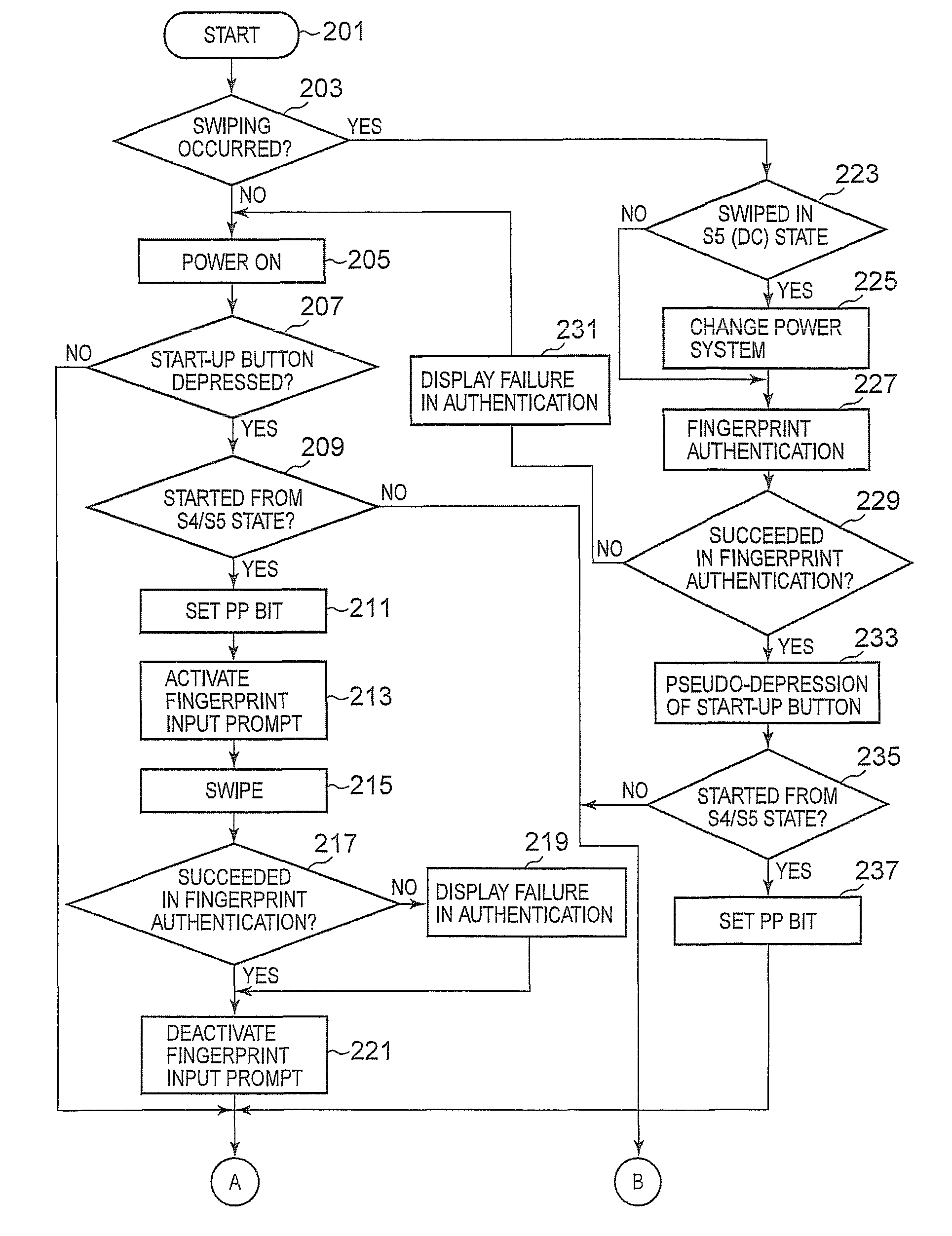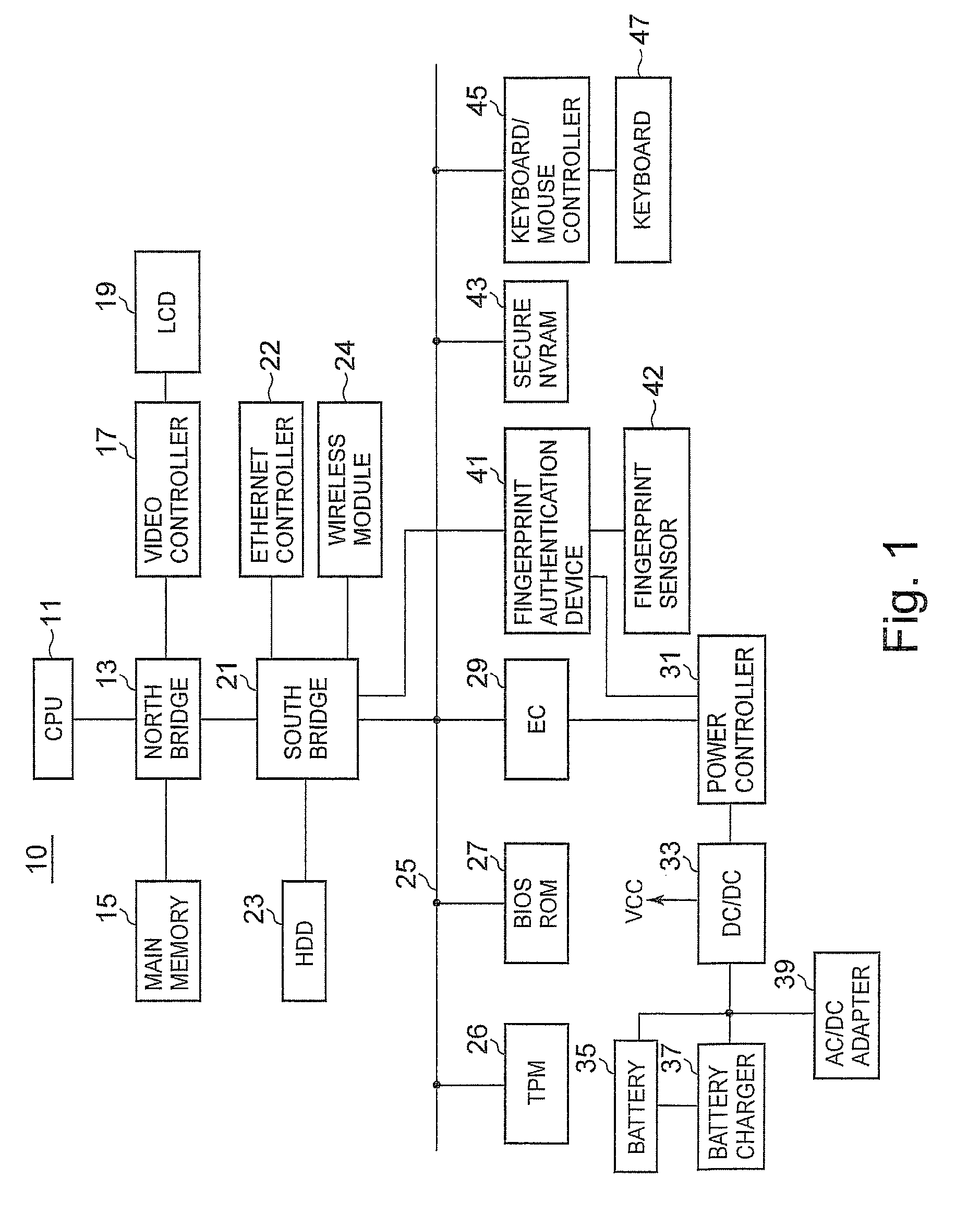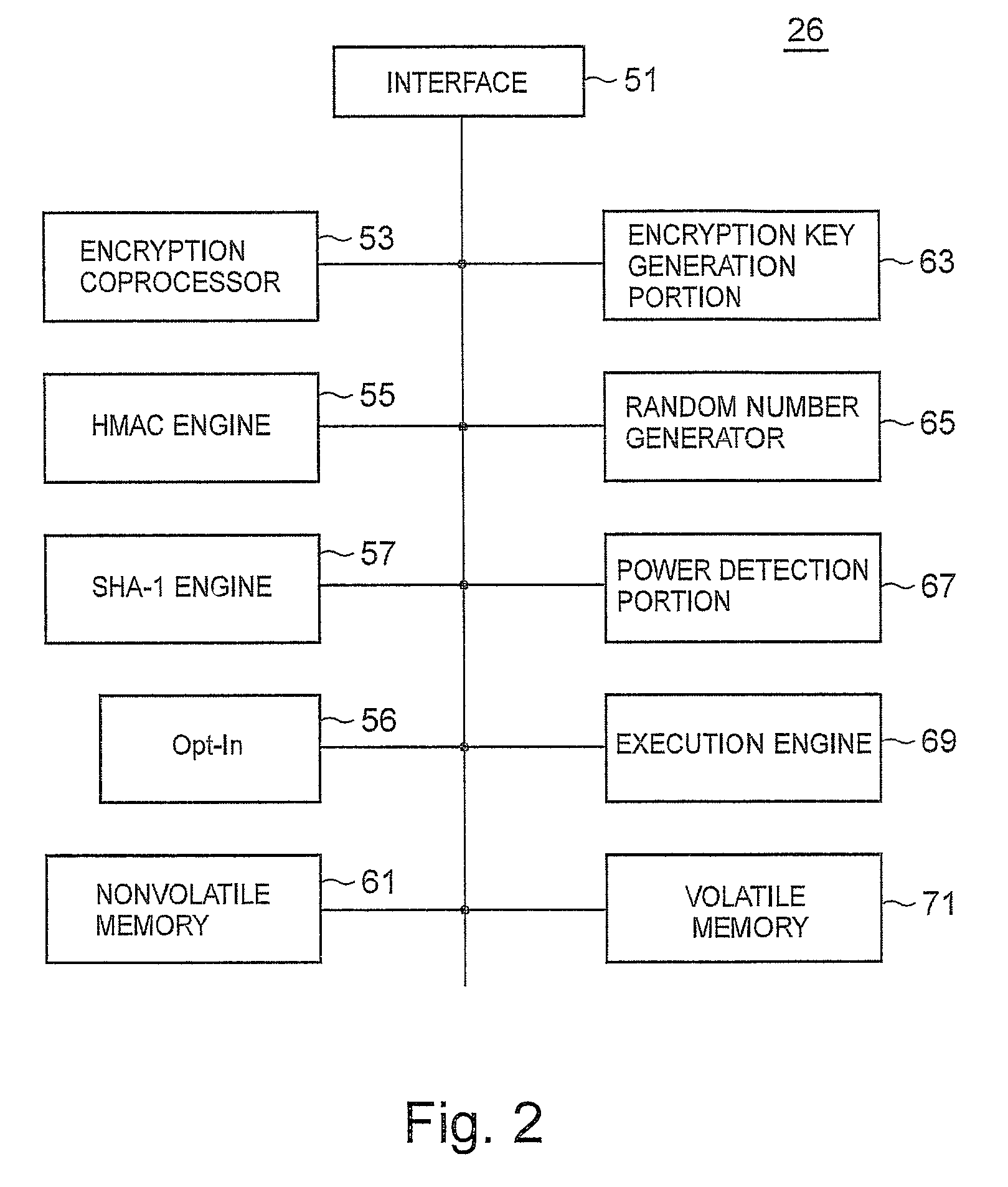Computers having a biometric authentication device
a biometric authentication and portable computer technology, applied in the field of portable computers, can solve the problems of unnecessarily consuming battery capacity, device consuming less power, computer connected to a network or in a mobile environment is exposed to the danger of attacks or thefts, etc., and achieves the effect of reducing the burden on the user
- Summary
- Abstract
- Description
- Claims
- Application Information
AI Technical Summary
Benefits of technology
Problems solved by technology
Method used
Image
Examples
Embodiment Construction
[Overall Hardware Configuration]
[0032]FIG. 1 is a block diagram illustrating the configuration of main hardware components of a laptop PC 10. A CPU 11 is an arithmetic processing device performing the central function of the laptop PC 10 and executes an operating system (OS), a BIOS, a device driver, or application programs. The CPU 11 controls a north bridge 13 and various devices connected to the north bridge 13 via various buses. The north bridge 13 is connected to a main memory 15, a video controller 17, and a south bridge 21 and has a memory controller function for controlling an operation of accessing the main memory 15, a data buffer function for absorbing a difference in a data transfer rate between the CPU 11 and other device, and the like.
[0033]The video controller 17 is provided with a graphics accelerator and a VRAM and is configured to receive a drawing command from the CPU 11 to produce images to be drawn and write the images in the VRAM and to deliver images read out ...
PUM
 Login to View More
Login to View More Abstract
Description
Claims
Application Information
 Login to View More
Login to View More - R&D
- Intellectual Property
- Life Sciences
- Materials
- Tech Scout
- Unparalleled Data Quality
- Higher Quality Content
- 60% Fewer Hallucinations
Browse by: Latest US Patents, China's latest patents, Technical Efficacy Thesaurus, Application Domain, Technology Topic, Popular Technical Reports.
© 2025 PatSnap. All rights reserved.Legal|Privacy policy|Modern Slavery Act Transparency Statement|Sitemap|About US| Contact US: help@patsnap.com



